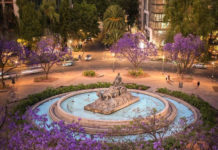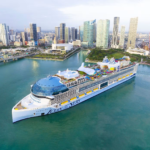A businessman intends to transform the London tunnels, which were once used as a center for secret spy communications, into a tourist attraction that will attract millions of visitors.

But the project caused great dissatisfaction among some residents of the upscale neighborhood in which it is located.
Investor Angus Murray, who runs an Australian asset management group, wants to rehabilitate the Kingsway Exchange Tunnels, which extend about 1.6 kilometers under the Holborn area in the heart of London.

The funder wants to provide immersive experiences in the tunnels through which to recall the history of the site, which was initially built to serve as a shelter from aerial bombardments during World War II, before becoming the headquarters of the Special Operations Executives branch of the British Foreign Intelligence Service (MI6), which William Fleming was inspired by the James Bond film series.

The investor hopes that the site will attract two million visitors annually from 2027, who could also come to enjoy the deepest pub in the United Kingdom.

Angus Murray, in a preliminary public offering prospectus in which he announced at the beginning of this January his intention to list the company responsible for the tunnel project on the London Stock Exchange, expressed his ambition for “the London Underground to become as famous as the London Eye+”, which is the huge amusement park site located in London on the south bank of the River Thames in central London.

During the “Cold War” era between the two superpowers, the United States and the Soviet Union, the British government took the initiative to expand the core tunnels, located about 30 meters underground, to create a secret long-distance communications center.

The tourism project requires keeping most of the equipment from that era, according to the company responsible for it.
But at the end of the 1980s, with the development of more modern communications technologies, the place with an area of 8,000 square meters lost its raison d’être, and its ownership was transferred to the British National Telecommunications Company, which put it up for sale in 2008.
No buyer came forward for years, until Angus Murray acquired the site in 2022.
Murray announced his intention to invest 220 million pounds sterling (about 279 million dollars), in order to “transform the tunnels into one of the most distinguished cultural experiences in the world,” according to what the company “The London Tunnels” confirmed last September, when announcing its project.
However, residents of this wealthy neighborhood have expressed their discontent in recent weeks, expressing their fear of the expected influx of tourists into their fairly quiet streets.

In a protest submitted by a resident, James Kiai, before the Camden Local Council and the City of London authorities, which are supposed to take a decision regarding the project, he announced his objection to the project because of “the radical change it will cause in this residential area.”
The company confirmed that it has so far raised ten million pounds ($12.8 million) from interested investors, and is still seeking to raise another 30 million, which it hopes to attract by listing the company on the London Stock Exchange.

















